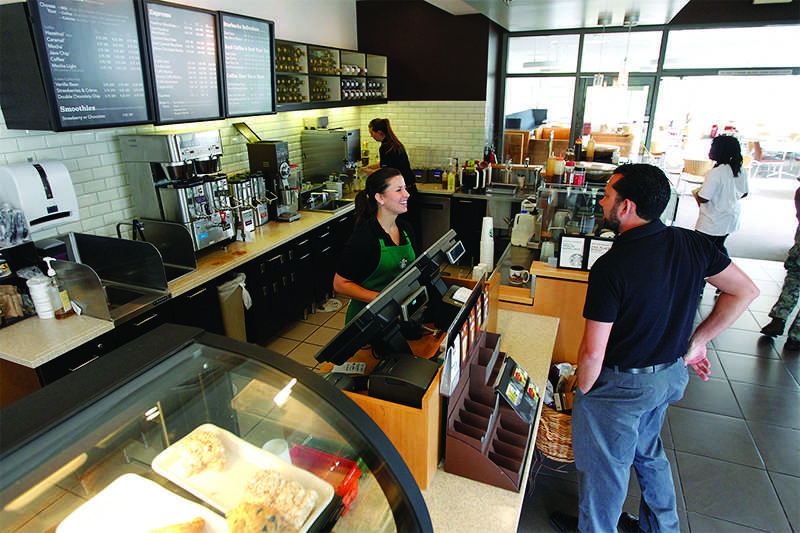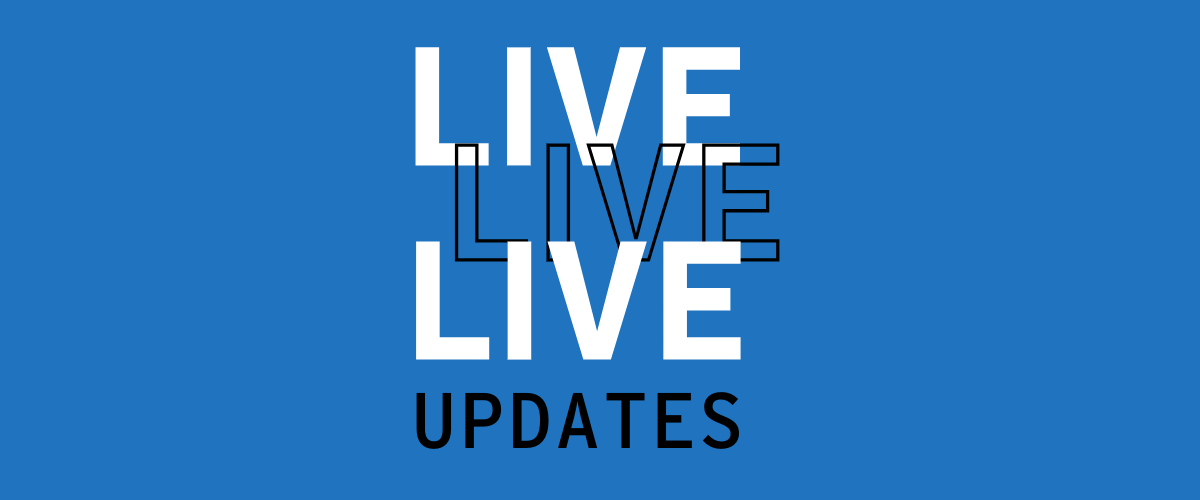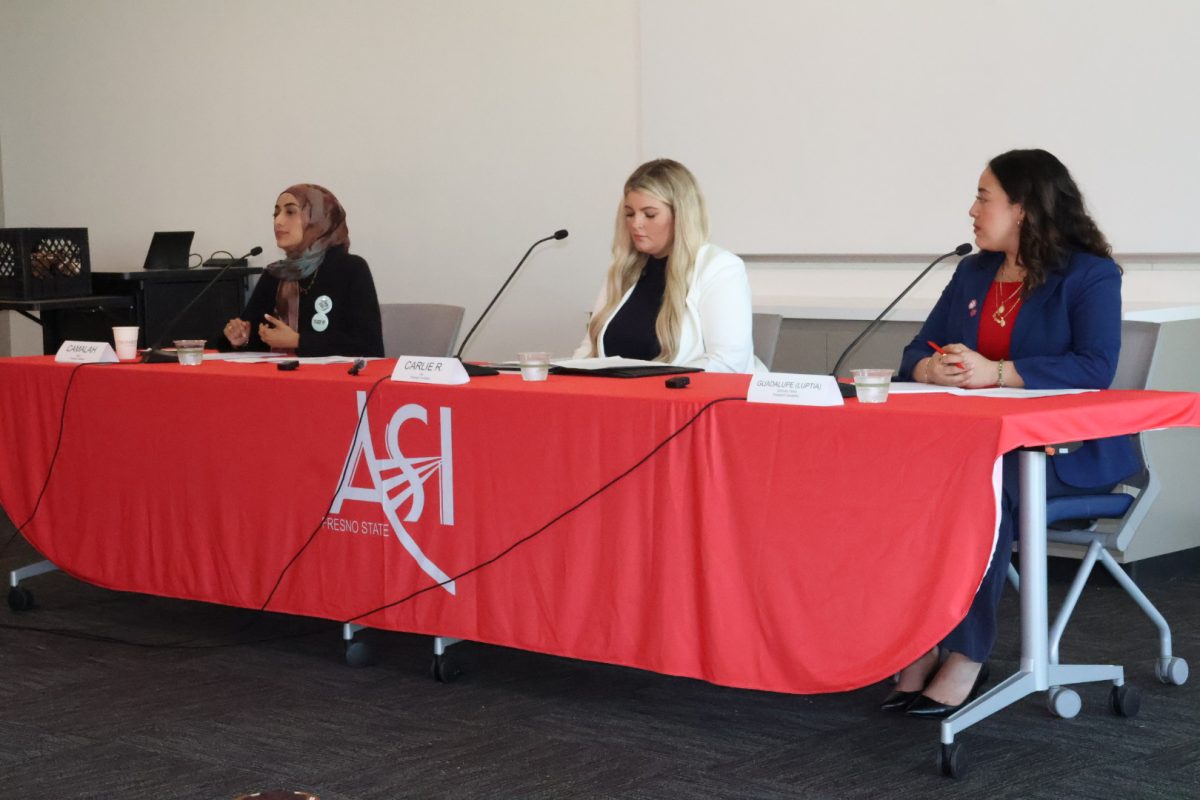Tipping is becoming more awkward than ever
Starbucks recently implemented a feature to tip baristas when a customer decides to pay with card. (Courtesy of Cary Edmondson) Baristas busy at work in the Henry Madden Library’s Starbucks. Ricky Serrano, the dining services manager at the shop, said its busiest time is 9 a.m. to noon or 2 p.m.
May 12, 2023
If you pay cash, they won’t ask.
Feeling pressured into leaving a tip while buying coffee using a card seems to be the new “norm” in Fresno thanks to the digital screen.
Touch screens and payments apps such as Apple Pay are making it easy for businesses to ask for a gratuity. ABC30 reported tipping requests and machines are increasing in local and national businesses.
I don’t think the customer should be asked to tip at places that are relatively quick stops. Sometimes the encounter is so brief that it’s hard to make a judgment of service. In these cases, customers should feel they are in an atmosphere where tipping is entirely optional.
I am a Starbucks regular, and grabbing a cold beverage in the mornings is one of the highlights in my routine. While a lot of times I would like to leave a dollar in the tip jar anyway because I receive wonderful service, I feel nowadays the setup has become a bit more invasive.
Places in Fresno such as Starbucks, Juice-It-Up, Jugo Salad and Juice Bar, Blue Moon Juice Bar, Boba Pub, and Kuppa Joy have hopped on this trend. A tip option appears on the kiosk when the customer pays by phone or card. The customer must decide whether or not to leave a tip on a coffee that they have not tasted or received yet.
I talked with others to see what they thought.
“If you pick the one that says no tip then you feel like a real jerk cause they’re looking right at you,” said Andrew Fiala, a Fresno State philosophy professor.
“Then you worry too, ‘OK, if I put no tip, are they going to spit in my coffee?’ ” Fiala said.
This latest tipping style is automatic when compared to a waiter or waitress dropping off the tab at a table and then later coming to collect it, giving the customer time and privacy.
“It used to be, tips happened after the service, and if it was good, then you add a tip,” Fiala said.
Instead, the barista is notified at that moment on their personal screen if the customer standing in front of them has left a tip or not. This is a prime example of how the customer can dictate the kind of service they are about to receive. After the gratuity amount for the coffee has been input or not, then an employee proceeds in making the customer’s order.
Some college students view it as difficult to keep up with tipping trends that have expanded to almost every service business.
“I feel bad, but I’m not going to tip you for my grande Starbucks,” said Marlee Guzman, a Fresno State student.
Others try to give what they have, even if it strains their budget.
“I tip even when I’m broke,” said Mayra Hernandez, a Fresno State student who worked in the food industry at one point.
However, Hernandez said, “Sometimes at coffee places I don’t really tip because I don’t know where it’s going. I know in the restaurants it will go to the server or the busser.”
A Starbucks barista, who asked to remain anonymous, explained that the tip does not directly go to the person behind the counter who is helping the buyer. Starbucks employees who receive a tip electronically rely on the computer system to calculate an average of how much gets added into each employee’s paycheck.
The barista described the point of view from the other side of the counter to The Collegian and said customers may not be alone in dreading this payment interaction.
“You can feel the awkwardness in the situation,” the barista said.
The barista shared that the tip option is an involuntary part of the payment process and that they do not have control over the device asking the customer for a tip.
“The system is pressuring people to leave a tip and I don’t like it,” the barista added.
Since the tip option has become a part of the payment process, the barista has noticed an increase in tips.
Allen Wilhoite, a heavy operator for Eppler Towing out of Fresno, gave his two cents to The Collegian on the tipping madness.
“If the person deserves it … yes, but you should never feel that you have to tip,” he said.
The gratuity table on the kiosk presents percentage options for the customer to select from such as 15%, 20%, and 25% percent.
“You know what, I don’t even look at that. I base it on the service that was provided. I don’t use that,” Wilhoite said of the gratuity tables. “I’ll tip accordingly.”
Wilhoite added, “There’s no such thing as entitlement, if you treat me right, I’m going to treat you right.”
The tip expectations in America were a culture shock for Fresno State exchange student Mélodie Voiry.
In southern Europe, where Voiry is from, tipping is not routine and the employees have higher wages.
Voiry grew up in the middle of France and then moved toward the capital, where she got a job working in a hotel-restaurant in Paris.
“I worked for four months and only once was I ever tipped,” she said of her old job back home.
Voiry moved to the United States in August 2022.
She recalled her first experience when she noticed the difference in customer service in the food industry in the United States compared to back home.
Voiry asked her friend, “Why are they being so kind and smiley?”… to which her American friend responded, “It’s because they want a better tip.”
While she said she has grown accustomed to tipping etiquette in the United States, Voiry still believes that a tip should be an optional “thank you” and not an expectation from the customer.
“If we tip somebody, it’s because they gave their time to provide us with the best experience,” said Voiry.
As for me, to avoid the momentary moral debate at 6 a.m., I would roll out your dollar-bills for that cup of coffee.








Pam • May 16, 2023 at 6:24 pm
I went to an entertainment venue that served food as well. Cost of the ticket included the meal and the gratuity. The server brought everyone’s receipts at the end of the night. She mentioned if you liked the service, please leave a tip. She had already been tipped! Kind of made me mad. I informed my table mates that our tickets were all inclusive. It just felt like another form of begging.